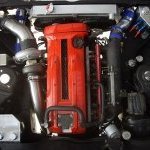Announcements
-
Similar Content
-
Latest Posts
-
Sorry I meant that we are building the EH for a client.
-
LOL, when one "money pit" is never enough Noice, and excellent work mate
-
I have more than enough digging, laying blocks, moving gravel, airrating, feeding and top soiling the grass, and setting up the veggie gardens growing some seedlings, and then removing all the unused rock to keep me busy for the next few months at least, hopefully the rain stops soon so I can get a few hours in this arvo, but, before that Sunday is washing day, is every body happy, you bet your life we are Nice country road day drives are a day off whenever I'm muscle sore from all the landscaping at the moment, but, more epic multiple day drives will start once the majority of the big jobs outside are completed
-
I thought I'd come back and add something I JUST learned. A Toyota LandCruiser with a 1HZ, mates perfectly with a bottle of Nulon brake fluid. As in, it perfectly screws in. Great make shift funnel when you cut the bottom of it off. This may work for your Corolla. Unfortunately, tipping a 10L drum is much harder than a 4 to 6L bottle, and they no longer include the easy pour tap which was just perfection to use previously.
-






Recommended Posts
Create an account or sign in to comment
You need to be a member in order to leave a comment
Create an account
Sign up for a new account in our community. It's easy!
Register a new accountSign in
Already have an account? Sign in here.
Sign In Now